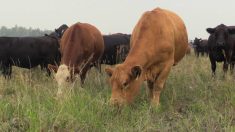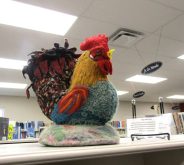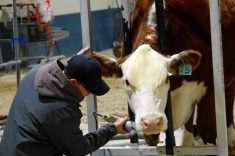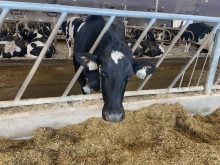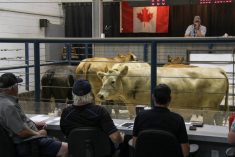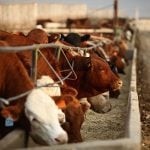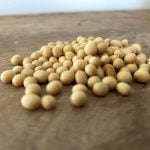The Canadian wool sector has expanded its system for domestic product market claims.
In July, the Canadian Wool Collective (CWC) — a grassroots non-profit dedicated to promoting Canadian wool — launched a new level to its certification program, which authenticates domestically produced wool and wool products.
Businesses meeting the program’s eligibility requirements get the right to market their wares using CWC branding, said Shirley Harvey, a board member with the organization.
Read Also

Protecting the farm from crime
From better lighting to cameras to reporting to police, here are some things farmers can do to reduce their crime risk.
WHY IT MATTERS: ‘Buy Canadian’ has become a rallying cry for consumers in recent months as trade tensions continue to simmer with some of Canada’s largest trading partners.
The program, introduced last year, has seen two additions in 2025.
The system now has three certification tiers. The original level, launched in 2024, is Tier 1. This is the gold standard, meant for any business producing or selling products made with wool 100 per cent harvested and processed in Canada. Recipients receive a red logo for display on the products that says “100% Canadian wool — grown and milled.”
“This tier emphasizes a fully domestic production process that really aligns with our commitment to strengthening domestic wool manufacturing infrastructure,” Harvey said.
In January of this year, the CWC expanded the program to include a second tier. This recognizes 100 per cent Canadian-grown wool and wool products, but which have been processed elsewhere. This category comes with a grey logo saying “100% Canadian wool: grown.”
Lack of processing facilities has been a longstanding hurdle for the sector.
”We created this tier to acknowledge that there are current limitations with our wool processing capacity here in Canada and we want to continue to advocate for increased domestic production capacity,” Harvey said.
“We believe that the second tier supports that goal as a pragmatic step toward our sustainability and industry growth.”
Most recent is Tier 3, which certifies blends containing at least 50 per cent Canadian wool. The other half of these blends can be made with any other fibre, said Harvey.
“And then it can be processed in or outside of Canada, so there’s no restriction on where exactly it’s being processed.”
The red logo for this tier says “Canadian wool: blend.”
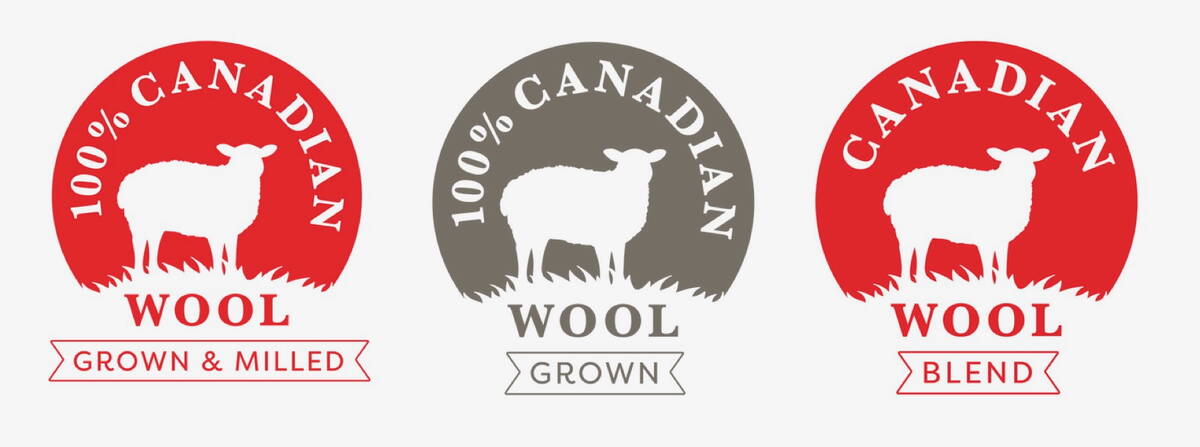
Program eligibility
The program is meant to go beyond primary producers, Harvey noted. It’s meant to extend through the value chain.
“(It’s for) anyone who is raising sheep, growing their own wool, anyone who’s a mill owner that’s manufacturing wool products and anyone that’s a small business owner that’s … in the business of dying yarn or roving or they’ve got a specialty business, like creating duvets and pillows.”
Applicants are screened by CWC on the basis of their product traceability strategies as well as their references, websites and social media pages.
“And then, once we’ve verified that the traceability of their products is what they say it is, they pay a $45 certification fee and, in exchange, they get the logos from our non-profit organization to put on their products and then we promote them in turn on our social media and our website,” said Harvey.
Canadian certification brings business
Christel Lanthier raises sheep with her husband, Joey Fiola, in Ste. Geneviève, Man., and is among those boasting Tier 1 certification.
Their operation, Ferme Fiola Farm, is a “nose-to-tail” sheep farm. Every practical part of the animal is sold through direct marketing, including raw wool, meat and wet and dry felts made from wool.
Lanthier says certification adds value to their products and — in the case of the CWC’s system — it assures customers their wool is 100 per cent Canadian grown and processed.
“Especially lately with everything going on in the world, people like to know that where they’re spending their money has been verified by a third party or well-trusted, and so I always try to certify,” she said.
Lanthier believes textiles are something of an untapped industry in Canada and one that’s a good match for direct marketing.
“I look at our local communal wool as we look at our local diets. A lot of focus lately has been on buying locally produced food and we don’t often talk about our locally produced textiles,” she said.
“And so when you do find fabric or yarn or felt or things like that that’s grown, milled and made in Canada, it’s quite special. And so just to be able to identify that, I think, is important.”
The fall (and rise?) of Canadian wool
The Canadian wool industry isn’t big by global standards but it’s among Canada’s oldest agricultural endeavours. According to the Government of Alberta, sheep and wool production in Canada began with the first French settlers in the mid-1600s and peaked in 1945.
Once less-expensive synthetic materials started presenting serious competition, most wool mills got out of the business, said Harvey. What few remain are often on precarious ground.
“The (legacy mills) have been passed down for many generations in the family. And then when you get a generation that decides that it’s not something that they want to continue on with, you lose that. The mill equipment gets sold off, the mill shuts down and you lose that important piece of infrastructure,” she said.
Founded in 2020, the CWC was formed to bring Canada’s wool industry back into the public eye.
Direct marketing
Wool producers hoping to skip existing distribution systems in favour of direct-to-consumer sales models are a major driver behind the CWC, Harvey noted.
“There’s a growing movement of sheep producers and small business owners that are working to sell their wool direct from their farm to the consumer, just because they can make more money that way. There is not a lot of money being offered on the commercial market,” she said.
The CWC focuses much of its attention on helping smaller producers and value-added business owners find new markets in which to sell raw material as well as develop new products.
“The possibilities for creating products are really only limited by people’s imagination,” said Harvey, highlighting a pair of felted wool insoles she discovered in her travels among the fibre community.
The co-operative would also like to expand the currently marginal domestic market for wool in response to today’s unpredictable international trade environment.
“Only 10 per cent of (Canadian) wool is actually sold here and 90 per cent is exported to places like China, the United States, India, the Czech Republic, Egypt, Bulgaria and Uruguay,” Harvey said.
The CWC plans to use an advocacy and education committee to lobby various levels of government for funding in support of wool. Some of their efforts are already paying off on a commercial basis, Harvey said.
“We’ve heard from members that folks across the country are inquiring about how to get their hands on Canadian wool products. They’re asking for it at their local yarn stores. They’re asking for it at fibre festivals.”
The organization is sheep wool focused, which Harvey links to their volunteer board. The organization is starting small.
“We’ve thought about maybe expanding it to other fibres down the road but that’s something we’d have to think out a little bit more carefully about how we would navigate that,” she said.




